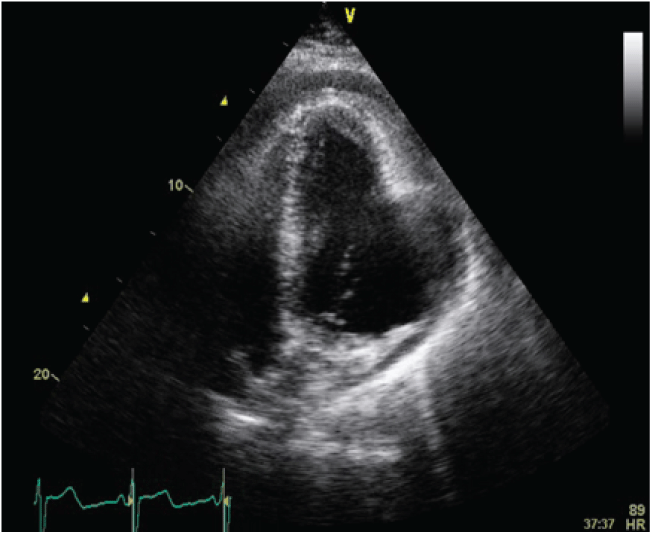A 53-year-old man was an avid soccer player and still played in the same regular Friday games he had played for years. On the day of admission, he developed a sudden onset of epigastric pain and syncope during his regular Friday match. Medical history was significant for a spontaneously resolved bout of typical angina 4 months prior. Examination revealed a normal JVP and pulsus paradoxus. Normal troponins and ECG were consistent with an old infarction. Hours later he became hypotensive and an echocardiogram showed cardiac tamponade. Puzzling was the presence of an inferior-posterior left ventricular aneurysm forming a heart within a heart (Figure 1). Emergent pericardiocentesis of only 150 mL of non-hemorrhagic fluid was evacuated and the patient's hemodynamics improved. Cardiac catheterization showed 100% stenosis of the circumflex artery and a stent was placed. Subsequently, aneurysmectomy was performed and he was discharged days later in stable condition.

Figure 1: Apical view deptics an inferior-posterior left ventricular aneurysm (LV = Left Ventricle, A = Aneursym) and a pericardial effusion giving an appearanc of a heart.